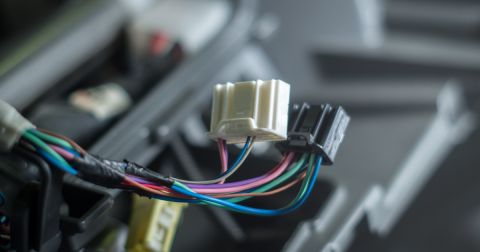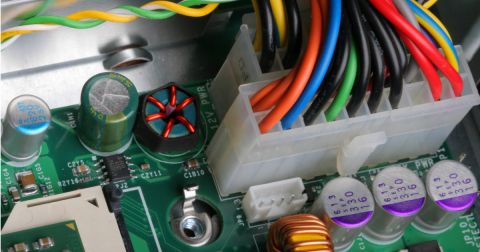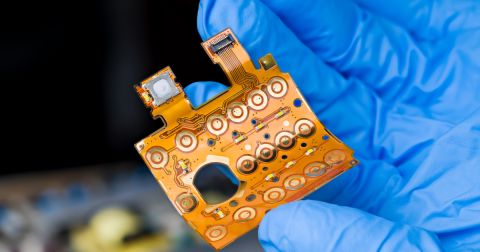Is Your Harness Design Agile-Ready? A Scorecard for Modern Development Workflows

In hardware development, “agility” has evolved from a trending term to a critical capability. As product cycles shorten and complexity increases, teams are expected to deliver rapid iterations without compromising quality or compliance.
However, agility often hits a wall in terms of wire harness design.
Why? Because harness workflows are still among the most rigid, manual, and disconnected parts of the product development process. Too often, wiring decisions are made late in the cycle, documentation is handled by hand, and every change feels like a mini-crisis.
So, how does your design process keep up with modern development needs?
In this post, I share a practical scorecard to help you assess whether your current harness workflow supports agile, system-aware development or whether it's holding your team back.
Why Agile Matters in Harness Design
We usually associate agile methods with software or digital electronics: fast sprints, quick iterations, and collaborative planning. But the pressure for speed and flexibility has fully arrived in the hardware world.
Today, products ship on faster cycles, hardware and software teams work concurrently, changes happen deep into the design phase, and multi-board systems and modular designs are the norm.
Harnesses, and the tools used to design them, need to be just as adaptable.
The Agile-Readiness Scorecard for Harness Workflows
Use the categories below to assess your team's agility in harness design. You don't need a perfect score, but the more of these you check off, the more prepared you are to deliver reliable, system-connected harnesses quickly.
1. Early Involvement in System Design
- Do your harness designers participate in architecture discussions from the start? Or are they brought in only after enclosures and PCB layouts are finalized?
Agile harness design starts early. When harness engineers understand the system's structure, signal flow, and mechanical constraints from day one, they can influence better board placement, connector choice, and optimized routing, saving time later.
2. Integrated PCB and Harness Environments
- Can your harness and PCB teams work from a shared project space or synchronized data model? Or do they pass files and spreadsheets back and forth?
Disconnected design tools are one of the most significant barriers to agility. Agile workflows allow harness designers to interact directly with board layouts, reference netlists, and verify connections in context, without duplication or guesswork.
Example: Altium enables harness creation within the same environment as schematic and PCB design, eliminating the need for separate platforms.

3. Configurable Libraries and Reuse
- Do you have access to standardized, reusable connector blocks, harness segments? Or is every project built from scratch?
Reinventing the wheel with every harness slows teams down. Agile teams rely on libraries that can be customized, reused, and updated across projects, reducing design time, increasing consistency, and minimizing errors.

4. Live Collaboration and Version Control
- Can multiple stakeholders, including mechanical, electrical, and manufacturing, collaborate in real time? Or are you relying on emailed files and change tracking in spreadsheets?
Modern development demands fluid collaboration. Agile harness design requires cloud-native tools or integrated platforms where users can quickly comment, review, and resolve changes, with full version history and traceability.
Example: Altium provides cloud-based collaboration that helps cross-functional teams stay aligned, especially when changes come fast.

5. Change Resilience
- Can your workflow absorb mid-cycle changes without major disruption? Or do late changes trigger cascading manual updates and rework?
In agile development, change is not a sign of failure. It’s part of the process. Your harness tools and processes should allow for responsive updates to connector assignments, wire definitions, and system requirements without breaking everything downstream.
6. Automated Documentation and Output Generation
- Are your harness drawings, wiring tables, and BOMs generated automatically? Or are they built manually at the end?
Agile workflows automate what doesn't require creative input. If documentation still takes days (or weeks) to prepare and update, your process isn't agile. It is reactive.
7. System Awareness and Traceability
- Can you trace every harness connection back to system requirements or schematic logic? Or are these links managed offline?
System-aware harness design ensures every wire, connector, and pin assignment is there for a reason and easily traced. This is especially important in regulated industries like automotive and aerospace.
Scoring Your Readiness
Here’s a simple way to self-assess:
- 6–7 checks - You're agile-ready. Keep refining.
- 4–5 checks - You're making progress, but there's room to improve.
- 0–3 checks - Your harness process may be slowing down your entire development cycle.
Why It Matters More Than Ever
With today’s tight deadlines and increasingly intricate products, your harness design process can either keep your project on track or hold it back.
Agile harness design isn’t just a trend. It delivers a real value through:
- Faster validation cycles
- Fewer integration surprises
- Better alignment between design and manufacturing
- Greater flexibility in responding to changes
Modern harness workflows can help you iterate confidently, deliver faster, and minimize costly errors.
Final Thoughts
Legacy harness design processes can slow down agile hardware development. Though often taken for granted, wire harnesses are prone to failure when agility isn’t built in.
Assess your current harness design workflow using this scorecard. Discuss the results with your team to pinpoint weaknesses. Investigate tools that enable quicker, more intelligent, and integrated design practices.











